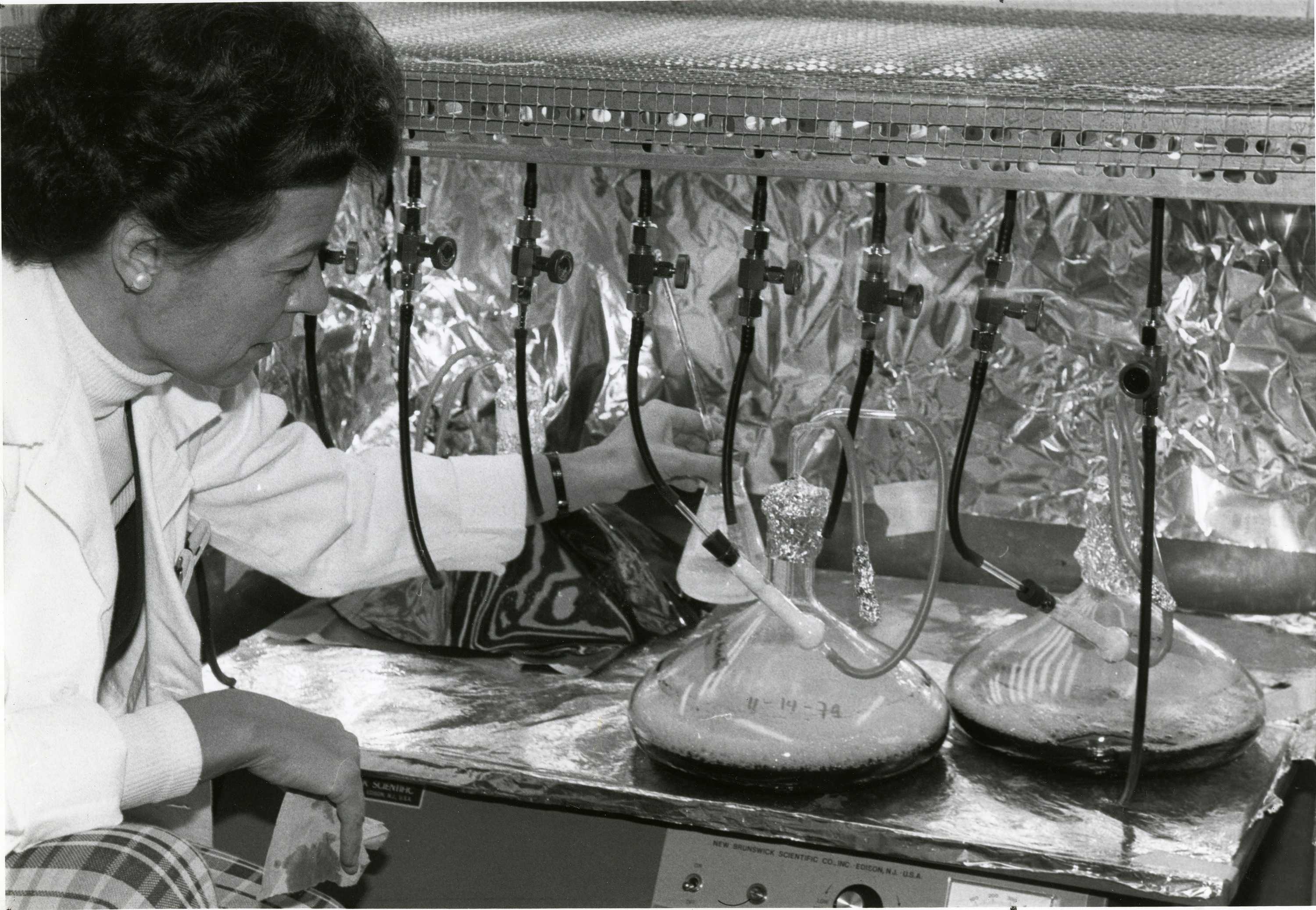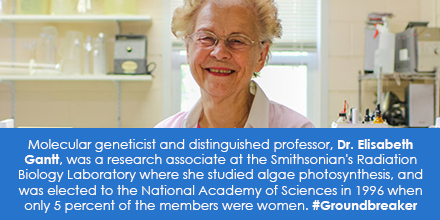Results for "Radiation"

Establishment of the Smithsonian Radiation Biology Laboratory
- Date: February 16, 2021
- Creator: Jessica Scott
- Description: On this day in 1965, the Smithsonian Radiation Biology Laboratory became an independent research entity at the Smithsonian Institution.

Wonderful Women Wednesday: Dr. Elisabeth Gantt
- Date: September 27, 2017
- Creator: Effie Kapsalis
- Description: Molecular geneticist and distinguished professor, Dr. Elisabeth Gannt, was a research associate at the Smithsonian's Radiation Biology Laboratory where she studied algae photosynthesis, and was elected to the National Academy of Sciences in 1996 when only 5 percent of the members were women. #Groundbreaker

Early 20th-Century Women Computers at the Smithsonian
- Date: August 12, 2021
- Description: Learn about Florence A. Graves, Gladys Thurlby Bond, and Nancy Prichard, three 20th century women computers who advanced solar research.
- Blog Post
I'm Falling for You
- Date: February 14, 2017
- Creator: Effie Kapsalis
- Description: You may not think to look to archives for love stories, but there is indeed romance found amongst the diaries, letters, and other assorted collections. Whether it's an anonymous poem sent to the Smithsonian's first Secretary's daughter, Mary Henry (rumored to be from this handsome crew), or the tale of botanist Dr. Florence E. Meier (1902-1978) who worked in the Radiation

Sneak Peek 10/2/2017
- Date: October 2, 2017
- Creator: Marguerite Roby
- Description: Universal quartz spectrograph used in radiation researches in the laboratory of the Division of Radiation and Organisms, MNH-11036C.

Link Love: 9/28/2012
- Date: September 28, 2012
- Creator: Mitch Toda
- Description: Link Love: a weekly blog feature with links to interesting videos and stories regarding archival issues, the Smithsonian, and history.

Wonderful Women Wednesday: Dr. Maria A. Faust
- Date: May 11, 2022
- Creator: Emily Niekrasz
- Description: Each week, the Archives features a woman who has been a groundbreaker at the Smithsonian, past or present, in a series titled Wonderful Women Wednesday.
- Blog Post
See Here: 3/15/2010
- Date: March 15, 2010
- Creator: The Bigger Picture
- Description: [caption id="" align="aligncenter" width="430" caption="The Division of Radiation and Organisms Laboratory, located in the basement of the Smithsonian Institution Building, a division of the Smithsonian Astrophysical Observatory dedicated to studying the effects of solar radiation on organisms. Shown here is a vacuum type thermocouples of very high sensitivity, used in

Getting Your Due, Samuel Pierpont Langley
- Date: November 28, 2017
- Creator: Ricc Ferrante
- Description: It can be so frustrating to put great effort into something, and then to have your work and achievements called into question. I can't begin to imagine how frustrated Samuel Pierpont Langley was in 1903. By that time, he had spent over forty years studying astrophysics and aerodynamics. His work on astronomically-derived time measurement in the late 1860's is the heart of the
- Blog Post
The Smithsonian’s First Radiometers
- Date: April 25, 2019
- Description: When curators at the Smithsonian National Museum of American History looked at seven radiometers in storage, they learned the instruments had been at the Smithsonian for nearly one hundred fifty years.

Science Conversations in the Shenandoah
- Date: September 6, 2018
- Creator: Mitch Toda
- Description: In February 1975, twenty Smithsonian scientists gathered at the National Zoo's Conservation Research Center in Front Royal, Virginia to talk about their research and the future of science at the Smithsonian.

Keeping in Touch
- Date: January 10, 2012
- Creator: Tammy L. Peters
- Description: Frances Escherich commuting with Secretary Abbot through Rock Creek Park to the Smithsonian.
